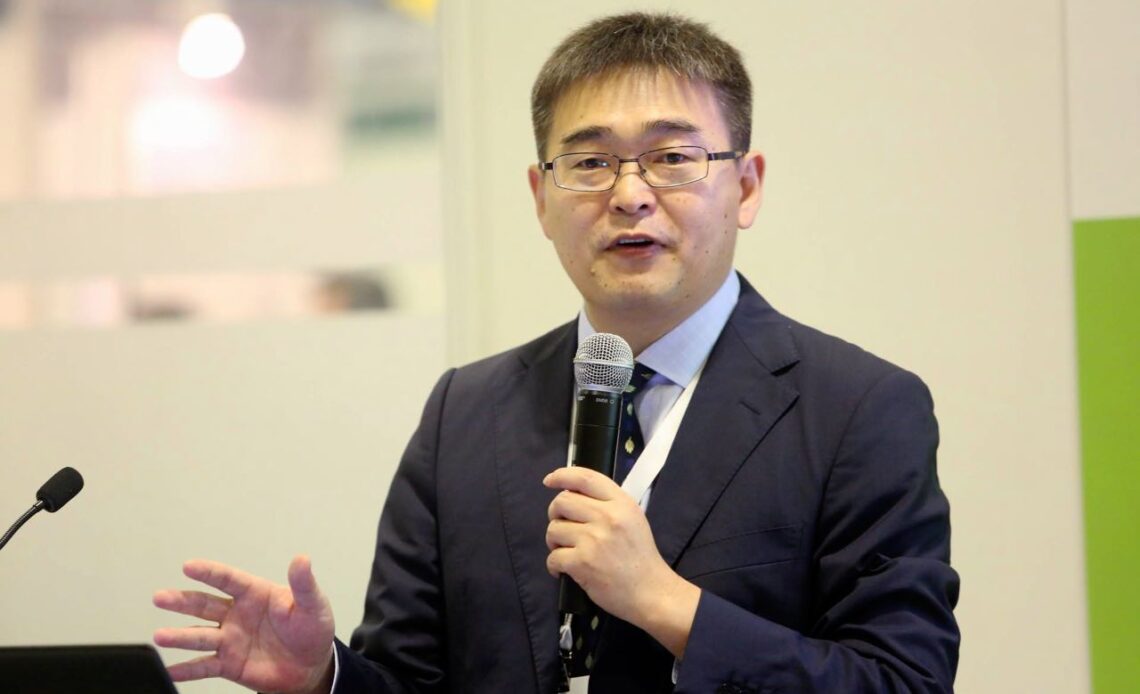
Above: Fang Liangzhou, Photo via Huawei’s Facebook page.
This according to Huawei, which recognises the central role of technology in aligning global efforts to the net-zero carbon emissions target outlined in the UN Climate Convention. According to Huawei, creating an intelligent society with lower or zero carbon emissions is a reality, but requires massive technological actions. The company is now using its over 30 years’ experience in developing innovative technologies to significantly invest in Huawei Digital Power.
The business unit will align its activities and those of its partners by integrating innovative digital and power electronics technologies, aimed at reducing carbon emissions, promoting renewable energy and conserving nature with technology.
Felix Chen, General Manager of Huawei Digital Power in Central America and the Caribbean, said that an accelerated digital economy has brought about unintended consequences – that of increased power consumption – and now, carbon neutrality has become the shared mission of the world.
“Huawei Digital Power is therefore committed to driving the energy revolution for a better and greener future with integrated digital and electronic technologies,” Chen said. “Today, we are focused on clean power generation, energy digitalisation, transportation electrification, green ICT infrastructure and integrated smart energy, as well as collaborating with industry partners to accelerate carbon neutrality.”
The digitization of energy and the integration of clean energy technologies in addressing a changing climate are of significant importance to countries in the Caribbean. At the World Leaders Summit on Climate Change (COP26) in late 2021, Prime Ministers of Trinidad and Tobago and Barbados both called for more significant action in facing climate change. Huawei notes that Caribbean nations are uniquely placed to lead the shift to a greener and more sustainable future.
According to the company, saving energy and reducing emissions, while boosting power generation from renewables can be a key driver of the Caribbean’s economic transformation and technological revolution.
Additionally, Huawei has set its own internal targets to help tackle climate challenges. The company implemented photovoltaic power projects at research centres and factories in China and is also working and assisting its partners in ensuring that by 2025, the company’s top 100 suppliers will have set carbon reduction targets too.
Huawei is working with partners to integrate smart energy sources, grids, loads and storage to build low-carbon buildings and campuses, reducing energy costs and increasing energy efficiency.
With environmental protection top of mind, Huawei has committed to four sustainability strategies:
- Carbon emission reduction: using technical and management measures to reduce the carbon footprint of Huawei products. Innovative ICT solutions can also help industries to reduce their carbon emissions.
- Promoting renewable energy: integrating digital and power electronic technologies to drive a shift to a low-carbon energy mix while making the most of renewable energy, ultimately providing green energy for a smart world.
- Contributing to circular energy: using more environmentally friendly materials, which help reduce the use of raw materials. The company’s products are more durable and easier to disassemble and using fewer resources.
- Nature conservation with technology: exploring innovative technologies, which amplify critical conservation efforts, such as monitoring, protecting and preserving ecosystems and enhancing biodiversity.
Dr. Fang Liangzhou, Vice President, Huawei Digital Power Technologies, noted that collective and collaborative action between government leaders and corporate citizens like Huawei can and will make the difference in achieving net-zero emissions targets. He said that the push to carbon neutrality must be a driver for innovation and not stymie the growing digital economy, which accounted for 43.7% of global Gross Domestic Product in 2020 (equivalent to US$32.6 trillion).
In recognizing that the company operates in many countries that have now set ambitious emissions targets while also seeking to gain the benefits of the new digital frontier – both in terms of trade and the improvement of the quality of life for its citizens – he said that Huawei Digital Power can help these countries to achieve this through technology, co-operation and partnership.
As of September 30, 2021, Huawei Digital Power has helped customers generate 443.5billion kWh of green power, save 13.6 billion kWh of electricity, and reduce carbon emissions by 210 million tons – which was equivalent to planting 290 million trees.

